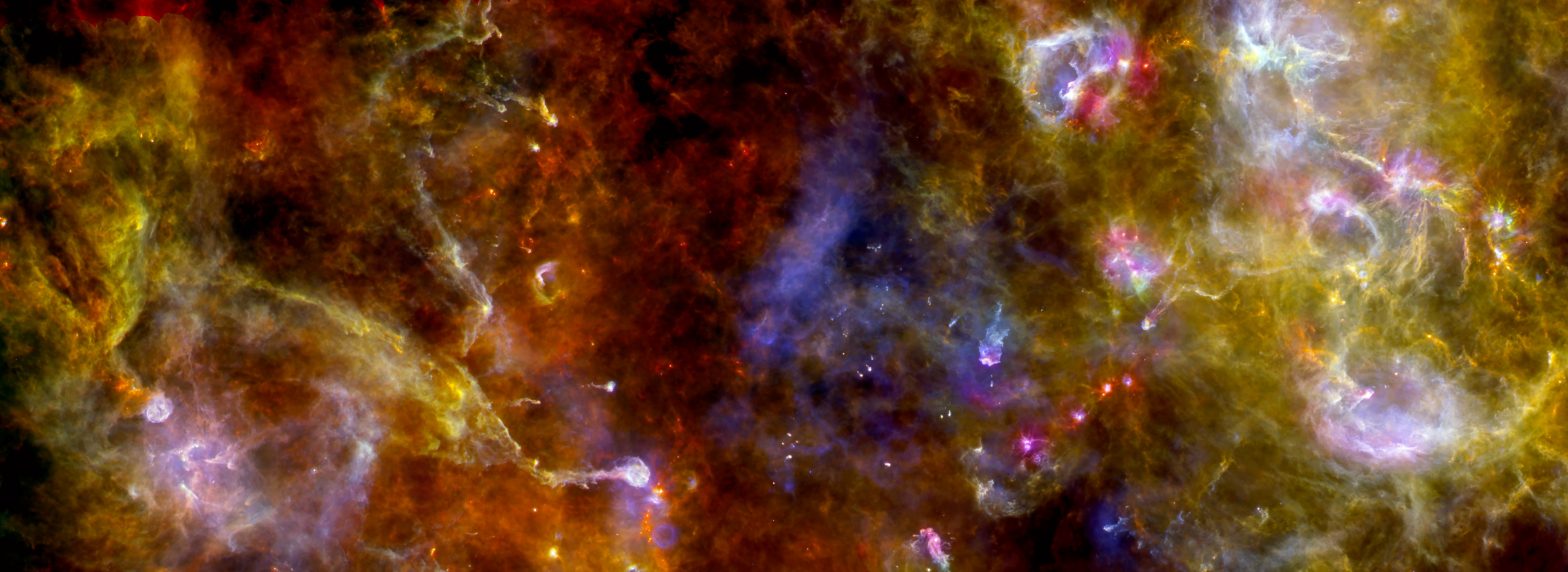| Basic Information | |
| What is this? | A region of the sky called Cygnus X |
| Where is it in the sky? | In the constellation of Cygnus |
| How big is it? | The region is several hundred light years across |
| How far away is it? | Around 4500 light years |
| What do the colours represent? | Bluer material is warmer, being heated by newly formed stars, while the redder areas are colder regions much further from the new stars, |
Downloads
See this object in:
This region of the sky in the constellation of Cygnus shows an incredibly active region of star formation, called “Cygnus-X”. In optical light this region looks almost completely dark, but in infrared light the interstellar material is seen to glow brightly, arranged in rings, columns and bubbles. At 4500 light years away, Cygnus-X provides an ideal opportunity to study the formation of massive stars in great depth.
As the networks of fine filaments intersect, they form dense knots and clumps of gas and dust. These collapse to form massive stars, which blow bubbles in the surrounding material with their intense radiation. These regions appear bright white in this image. Most are on the right of the image, though there is one at the end of a long filament on the left.
Below the long filament is a faint blue ring of material that has been ejected by a massive star nearing the end of its life, but which is itself invisble at Herschel’s wavelengths. The wispy blue material in the centre is being heated by radiation and winds emanating from a massive cluster stars, called “Cygnus OB2”, which is also invisible to Herschel. The dust is heated as it is pushed away, leaving a clearer, darker region.
As well as the bright regions associated with the formation of very massive stars, there is a network of red and yellow filamentsstretching across the image. This material is colder, but the small red clumps are the initial stages of the star formation.
There is almost no part of this image that doesn’t contain something of interest, and astronomers study all of them in incredible detail. Many regions are given catalogue numbers, such as DR21, though some have informal names, such as the “Diamond ring” towards the right of the image.


